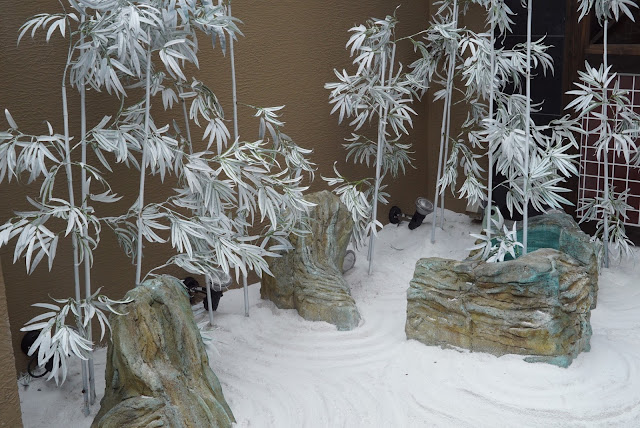Our stay in Kyoto was different from that in Tokyo, as I have spent a great deal of time in our Kyoto hotel room, with the worst case of stomach "flu" (or "bad bacteria", as my Japanese doctor said) I have ever had. The rest of the party has seen a lot, but I have not seen nearly as much.
Kyoto is very different from Tokyo. It has a population of about 1.5 million people, and it is much more manageable in the sense of it having one "downtown", as opposed to Tokyo's ten or more downtowns spread out over a large area. Kyoto is also different in that it is actually a planned city. Planned, that is, around the year 800 AD, when the current Emperor decided that the then capital, Nara, was too crowded with Buddhists, and that he would build a new capital. It was laid out in a grid pattern according to the then current Chinese practice. According to Wikipedia, Kyoto now has some 1,600 Buddhist temples; so much for getting away from Buddhists.
In any city that I have never been to (and those that I have) I am always fascinated to just wander the streets and get a feel for the life of the city and its streetscapes. And walking around Kyoto is certainly very interesting. One important thing about Kyoto is that it was spared from destruction by American bombing in World War 2, so a lot of traces of the very old still exist, not only temples and shrines, but small wooden houses and the like in the middle of the city. That said, the idea of a "historic district" or of preservation of the character of a neighborhood is only just beginning to take hold. In general, though, there is no sense of preserving the old or maintaining some kind of aesthetic unity, unlike policies in effect in many cities in the US or Europe. So walking through Kyoto is like walking through some sort of collage in time, with sharply contrasting buildings from different eras juxtaposed. It's actually interesting to think the Japanese tastes for both beauty and conformity do not extend to streetscapes; in fact, anarchy seems to prevail. Which is nice, but very different, say from a row of New York brownstones, or Paris's Haussmannian streetscapes.
So you see both old and new, beautiful and ugly. Here, in random order, are some photos from the streets of Kyoto.
This small house is almost completely obscured by the plantings around it.
A row of older houses in Gion district:
The ever present electrical wires take over:
The Kyoto City Hall:
Sometimes you see some very odd buildings. I don't know if this is or once was a junk store. Now it seems like a house with some display cases of old junk in front of it.
Detail of above:
Because I was limited in time and energy, there was a great deal I would have liked to have seen in the eastern area, where many of the temples are, but that will have to wait for the next time.
Temples and other big attractions will appear in the next post.


















No comments:
Post a Comment